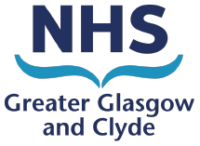Lab Handbooks and Manuals, previous editions of the laboratory newsletter and older memos are available below:
Laboratory Handbooks and Manuals
Laboratory Newsletters
- Newsletter 1 – August 2014
- Newsletter 2 – November 2014
- Newsletter 3 – April 2015
- Newsletter 4 – September 2015
- Newsletter 5 – March 2016
- Newsletter 6 – August 2016
- Newsletter 7 – February 2017
- Newsletter 8 – October 2017
- Newsletter 9 – December 2017
- Newsletter 10 – April 2018
- Newsletter 11 – October 2018
- Newsletter Supplemental – QFIT
- Newsletter 12 – February 2019
- Newsletter 13 – July 2019
- Newsletter 14 – December 2019
- Newsletter 15 – February 2020
- Newsletter 16 – July 2020
- Newsletter 17 – December 2020
- Newsletter 18 – October 2021
- Newsletter 19 – March 2022
- Newsletter 20 – September 2022
- Newsletter 21 – December 2022
- Newsletter 22 – April 2023
- Newsletter 23 – August 2023
- Newsletter 24 – September 2023
- Newsletter 25 – April 2024
- Newsletter 26 – November 2024
User Satisfaction Surveys
- Primary Care 2017 (2022 coming soon)
- Secondary Care 2021
Memos (Primary Care)
- Patient identification for patients without CHI (Dec 2018)
- The importance of putting samples in the correct bag for transport to laboratories (Dec 2018)
- Transport bags poster (Dec 2018)
- Transport bags poster (Bute and Dunoon) (Dec 2018)
- Please do not send requests for tests done by other disciplines on Biochemistry / Haematology request forms (Jan 2020)
- QFit for practices not using ICE electronic ordering (Jan 2020)
- Changes to the urine catecholamine and 5HIAA service (GRI memo, Mar 2020)
- Introduction of Active B12 assay (May 2024)
- IFU email add on service (Nov 2024)
Memos (Secondary Care)
- Use of paper request forms when Trakcare not available (Nov 2018)
- Sending samples requested on Trakcare to the laboratory (Nov 2018)
- Cryoglobulin service at Vale of Leven (Nov 2018)
- Barcodes for Point of Care Testing (Nov 2018)
- Urine pregnancy test false positive results (Jul 2019)
- Biochemistry samples apparently being put in Microbiology bags (Aug 2019)
- New P3NP assay (Oct 2019)
- GEM 5000 gas analysers (Nov 19)
- Biochemistry samples apparently being put in Microbiology or Virology bags (Apr 2020)
- IFU email add on service (Nov 2024)
- Request slip for biochemistry add ons – Out of hours only (Oct 2024)



